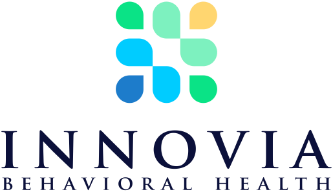What exactly is the gut?
The word gut is another way of referring to our digestive system. It is the passage through which food enters your body through your mouth, is digested (or broken down) in your stomach, beneficial nutrients are absorbed in your intestines (the small and large bowel), and finally, toxins and wastes are expelled by the rectum. The inner surface of the gut is known as the intestinal barrier (the mucosa). This barrier’s role is to protect the body by only allowing nutrients, water, and electrolytes to cross into the bloodstream while preventing undesirable substances from entering the body by keeping them in the gut to be excreted as waste (this membrane is semipermeable).
“The human body has a ringmaster. This ringmaster controls your digestion, your immunity, your brain, your weight, your health, and even your happiness. This ringmaster is the gut.” -Nancy Mure
But our digestive tract is not just for digesting and absorbing nutrients. It is also involved in our immune function since approximately 70% of the immune system is located in the gut.
It can also affect brain health. New research shows the gut and the brain are in direct communication 100% of the time through the Vagus nerve, the longest nerve in the human body. Due to this connection, some people named the gut “our second brain.”
The gut is also home to our microbiome.
But what is that? Our microbiome is a community of microbes that lives in the human GI tract (mainly bacteria). We have up to 150 times more bacterial DNA than human DNA! They play a vital role in our digestion, production of nutrients, detoxification, metabolism, protection against pathogens, and regulation of the immune system. Since they are involved in every function of our body, focusing on the gut microbiome is one of the most important and powerful things we can do for our health.
How do we get our microbiome?
Many factors contribute to the function and composition of the gut microbiome:
– Genetics: Many bacterial species in the gut were transmitted from one generation to the next.
– The way you were born: When passing through the vaginal canal, the baby will be in contact with a large number of microbes from the mother, sometimes including fecal matter. C-sections can delay building a healthy microbiome, but this doesn’t mean the baby will have a dysfunctional one forever.
– Skin-to-skin contact: Like kissing and hugging.
– The way you were fed: Breast milk contains around 600 different kinds of bacteria and becomes one of the most critical sources of bacteria for the baby’s microbiome.
As you can see, our childhood is critical for microbiome development and transfer – but it doesn’t end there. You will continue for the rest of your life, picking up microbes from the environment surrounding you, the people that you interact with, and even certain animals. So, the more we interact with nature and the environment, the more diverse our microbiome can become. 60 to 70 percent of a person’s microbiome is the more stable, like a base portion, which gets pretty well established within about three years of development (but it can remain malleable for up to seven years). The remaining 30 to 40 percent is not quite as set and can be manipulated and changed relatively quickly and easily. This portion can influence the other base of the microbiome, not by changing it but by influencing what it does.
Some environmental factors that affect our microbiome are:
– Pesticides and preservatives will act as an antibiotic, selectively killing some good bacteria and allowing opportunistic pathogens to grow.
– Frequent use of antibiotics: They kill undesirable bacteria and treat infections but also kill the beneficial bacteria in our gut, leaving room for opportunistic microbes to grow out of control. It can take several months or even years to recover the ecosystem.
– Restrictive diet and low in fiber: Many of these microbes require plant-based material as food since they don’t do very well with proteins and fats, and by breaking them down, they promote the growth of other good bacteria in your gut.
– Western diet: High sugar intake, low fiber, and oxidized fats create a hostile environment, decreasing the microbiome diversity. A less diverse microbiome affects the gut lining and creates inflammation.
– Lack of physical activity: Exercise increases the beneficial bacteria in your gut, enriches the microbiome’s diversity, and can enhance the production of anti-inflammatory metabolites.
– Stress: Is linked to changes in the abundance and diversity of gut bacteria. And since the gut and the brain are very well connected, your gut can profoundly affect your mood, cognition, and behavior.
– Medications: Non-steroidal anti-inflammatories, statins, antipsychotics, and painkillers can decrease certain gut bacteria.
– Age: The abundance of some protective bacteria can decrease around 60 y/o.
-Toxins: GMO foods (genetically modified), heavy metals, smoking, artificial sweeteners.
The name for a dysfunctional or imbalanced microbiome is Dysbiosis.
What are the symptoms of a dysfunctional Microbiome or an Unhealthy Gut?
– GI disturbances such as gas, bloating, constipation, diarrhea, and heartburn.
– Unintentional weight changes. Sleep disturbances, constant fatigue.
– Anxiety, depression, ADD, brain fog.
– Skin conditions: Acne, rosacea, skin allergies.
– Autoimmune conditions.
– Food intolerances (allergies or sensitivities).
But how do I go from having an imbalanced microbiome to having symptoms all over my body?
When your gut bacteria changes and becomes unhealthy, it damages our main protective barrier to the outside, the mucosa. It causes inflammation to the gut making it permeable (or leaky= LEAKY GUT), letting pass substances into our bloodstream, like pathogens, toxins, partially digested food, and bacteria. The Immune cells identify them as a potential threat and start an immune response to protect the body. This immune response creates local (causing GI symptoms) and systemic inflammation (systemic symptoms) and sometimes can develop antibodies attacking the body’s tissue (autoimmunity).
How to achieve a healthy gut?
The gut doesn’t just heal itself. We need to work on healing our gut lining and microbiome when we have an unhealthy gut. Some of the steps are:
– Mindful eating: Digestion starts in your brain. When you take a moment to pay attention to your food, your brain signals your body to release saliva and digestive enzymes needed for healthy and proper digestion. It will also help you to pay attention to your body’s signal of being full.
– Eat slow and chew your food: These allow you to break down the food into smaller pieces, making it easier to digest.
– Boost Stomach acid: Stomach acid helps break down, digest, absorb nutrients and protect the body from harmful bacteria or viruses. Low stomach acid can cause bloating, burping, heartburn, gas, undigested food in stools, and nutrient deficiency. An easy way to do it is by adding lemon juice to your water or drinking one tablespoon of raw fermented apple cider vinegar in water every morning.
– Eat more fruits and vegetables: They are full of nutrients and fiber. Some of that fiber is called prebiotics, a particular plant fiber that helps healthy bacteria to grow in your gut, basically food for our microbiome. Some examples are apples, artichokes, asparagus, banana, berries, garlic, onion, legumes, and tomatoes. You can also find prebiotics supplements.
If you are not used to eating them, start with a small portion of cooked vegetables with every meal and increase it over time. You can steam, roast, sauté or make soups with them. The next step would be the smoothies mixing as many as you like, and last, add raw vegetables like salads.
– Probiotics are a combination of live beneficial bacteria and yeast that naturally live in our body. We can find them in fermented foods (like kombucha, yogurt, apple cider vinegar, and pickles) or supplements. They can help restore our microbiome diversity.
– Avoid processed food: Processed food is food that’s changed in any way from its natural state, including canning, freezing, or adding ingredients. It can feed the harmful bacteria in your gut, doesn’t have a lot of nutrients, and takes a lot of energy from the body to digest.
– Limit Sugar Intake: High sugar intake feeds the unhealthy bacteria while decreasing the amount of the healthy ones.
– Gut rest: Digestion is a task that requires a lot of energy from your body. Eating three times a day and fasting for at least 12 hours at night gives the gut the time it needs to restore its integrity. This digestive rest is essential for those with a “leaky gut.”
– Parasympathetic nervous system activation: This system is critical for digestion and relaxation. It increases saliva and stomach acid secretion, improves digestive enzyme function and bile secretion, and helps move food throughout the GI tract.
You can improve this system by breathing:
Inhale throughout the nose for 4 seconds
Hold your breath for 4 seconds
Exhale throughout the mouth for 4 seconds
Hold your breath for 4 second
Repeat for three to five rounds.
You can use this practice before every meal or anytime throughout the day.
– Spend time outside: Gardening, hiking, interacting with pets, and other activities to improve microbial diversity.
– Stay hydrated: Helps to protect the gut mucosa and prevent constipation.
– Reducing the amount of caffeine and alcohol will protect the integrity of your gut and your gut microbiome.
– Move your body and make sure you get a good night’s sleep!
Remember: By putting yourself first and building healthier habits, you can take control of your health and regain your energy and vitality.
 Andrea Vasquez, MD, CFNC (Andrea hosts functional nutrition groups with Innovia each week in English and Spanish)
Andrea Vasquez, MD, CFNC (Andrea hosts functional nutrition groups with Innovia each week in English and Spanish)

